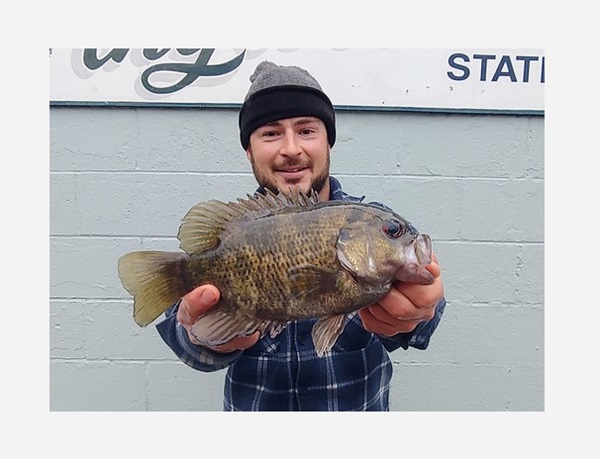BALTIMORE, MD—The Maryland Department of Natural Resources has recognized Thomas Over Jr. of Darlington as a new state record holder for rock bass (Ambloplites rupestris) in the Chesapeake Division. Over caught a 1.0-pound rock bass January 6 in the lower Susquehanna River.
Over was fishing with a light spinning rod and jigging for yellow perch when he hooked the large rock bass.
“I was throwing a tandem perch rig with BPS jig heads and Southern Pro lil Hustler 1.5-inch white/red tube in deep water,” Over said. “When I felt the ‘thump’ and started cranking, I thought I had a doubleheader of jumbo yellow perch, but to my surprise, it was a new species of fish that I did not recognize. I sent a picture to a few friends, and Paul Badders replied, ‘rock bass, and a pretty big one from the looks of it.’ ”
The fish measured 10.5 inches long. Its weight was determined on a certified scale at Angler’s Sport Center in Annapolis, and Maryland DNR Recreational Fishing Outreach Coordinator Erik Zlokovitz confirmed the species. The catch ties the record set by Timothy A. Adams on the Susquehanna River on May 4, 1997.
A member of the sunfish family, rock bass have short, robust bodies with an olive-green top and gold or brassy-colored sides. The scales along their sides have a dark spot, often forming a striped-like appearance. The anal fin has five to seven spines, and on adult rock bass, this fin has a dark outline. The number of anal fin spines distinguishes this fish from a similar fish, the warmouth (Lepomis gulosus), which has only three anal spines. Rock bass are not related to striped bass, which are often called “rockfish.”
The Department of Natural Resources maintains state records for sport fish in four divisions – Atlantic, Chesapeake, Nontidal, and Invasive. Anglers who think they have a potential record catch should download and complete a state record application and call 443-569-1398. The department recommends the fish be immersed in ice water to preserve its weight until an official can check, confirm, and certify it.
Photo via DNR/Thomas Over Jr.


